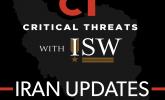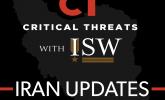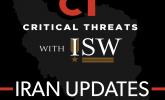April 27, 2023 - ISW Press
The Russian military command appears to be reshuffling the leadership of command organs associated with force generation, sustainment, and logistics. Several prominent Russian milbloggers claimed on April 27 that Colonel General Aleksey Kuzmenkov, Deputy Head of the Russian National Guard (Rosgvardia), has replaced Colonel General Mikhail Mizintsev as Deputy Defense Minister of the Russian Federation for Logistics. A Wagner-affiliated milblogger claimed that Mizintsev’s dismissal may be a result of a combat readiness check of troops of the Northern Fleet carried out by former commander of the airborne (VDV) forces and Wagner affiliate Colonel General Mikhail Teplinsky, who was recently re-appointed to an unspecified command role in Ukraine. The milblogger claimed that Teplinsky’s inspection revealed that troops in certain places of the front were not receiving necessary weapons. The Wagner Group has experienced significant issues with dealing with the Russian logistics enterprise, and Teplinsky’s reported role in identifying issues with supply may portend a renewed focus of Russian sustainment organs on providing Wagner with necessary logistical support, as Teplinsky’s affiliations with Wagner are well-established. ISW previously reported on September 24, 2022, that Mizinstev replaced Army General Dmitry Bulgakov as Head of Logistics and that Mizintsev previously was the head of the Russian National Defense Control Center and oversaw command of the 150th Motorized Rifle Division (8th Combined Arms Army, Southern Military District) during Russian operations in Mariupol in spring 2022. Russian milbloggers additionally reported that former Head of the 8th Directorate of the Russian General Staff (State Secret Protection) Yuri Kuznetsov will become Head of the Main Directorate of Personnel of the Russian Ministry of Defense and that Stanislav Gadzhimagomedov, Deputy Chief of the Main Operational Department of the Russian General Staff will replace General Oleg Gorshenin as Head of the National Defense Control Center. Official Russian sources have not yet confirmed these changes.










